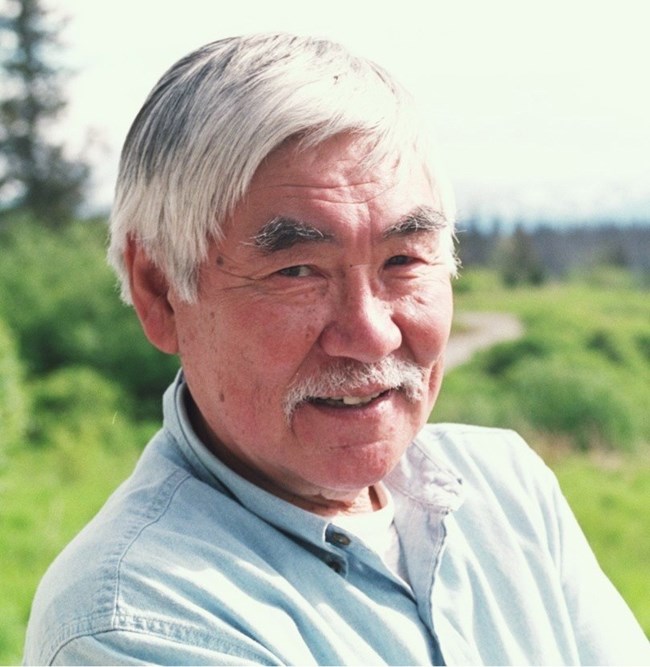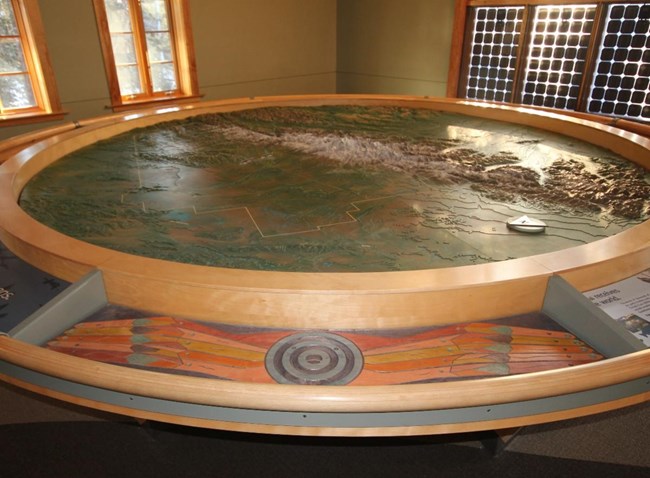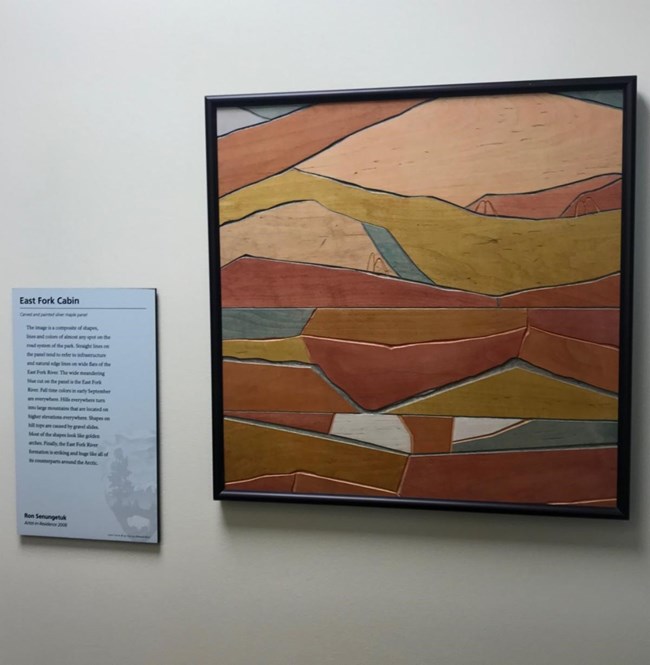Last updated: October 26, 2021
Article
Ron Senungetuk: Alaskan Artist Remembered

NPS Photo
Along the perimeter of the model are panels created by Alaska Native artists from around the state, and each section represents the artist's respective culture. One panel was the artistic vision of Ron Senungetuk, an important artist in Alaska's recent history.

NPS Photo
Senungetuk was drafted into the Army during the Korean War, and when he returned to school he earned a fine arts degree from RIT and a Fulbright Scholarship to study metalsmithing and sculpture in Oslo.

McCutcheon Collection, Anchorage Museum, B1990.14.5.AkNative.20.7
Senungetuk came to Denali National Park in 2008 as a part of its Artist in Residence program. He stayed at the East Fork Cabin, which inspired his carved silver maple panel that now hangs in Denali's "Shaffer Building" (see Figure 5).

McCutcheon Collection, Anchorage Museum, B1990.14.5.AkNative.25.14
This piece represents the Western/Beringia region of Alaska, and his Inupiaq culture. He issued the following statement describing this work titled "Tingmeaqpait:"
Many legends in Kingiguun (“High One”), also known as Wales, are connected to the whaling culture of the Bering Strait maritime region. One common legendary image was a giant bird. Tingmeaqpait lived at high mountains.
The places included Kingiguun, Kiqluait of Kawarak (“Saw Toothed Mountains”), and higher mountains beyond. The giant birds were portrayed as carriers of caribou and whales. The images were incorporated into whale hunting equipment for reverential purposes, identity, and for a sense of beauty. “Kishiq” is a Wales term. It means “to serve notice” or to invite. Nearby communities were asked to participate in Wales to attend trade fairs and to celebrate life.
The anthropological term for this event generally is “messenger feast”. The so-called “eagle dance” is known as “Nishaq” in the Bering Strait region. My work at Denali alludes to this once high form of a ceremonial rite. A Bering Strait seal dance mask is centered on the giant bird. A seal coming up for air through its ice hole forms surface rings on the water. The mask serves as a connection between the undersea world, the world as we know it, and cosmology.

NPS Photo
Senungetuk has art work in private collections all over the world but is also on display at the Anchorage Museum, the Museum of the North at UAF, the Native Medical Center in Anchorage, and the Pratt Museum in Homer. He was an original member of the Alaska State Council on the Arts and even designed its logo.

NPS Photo/Carol Harding
